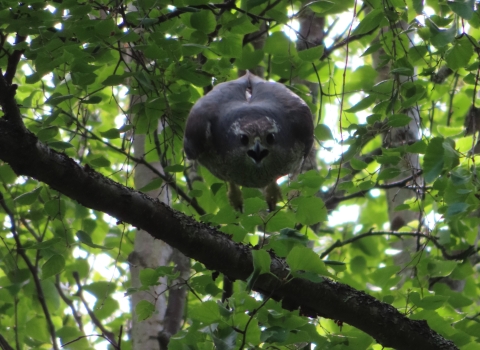Wildfire Suppression
The fire station for the Klamath Basin Fire Management Zone (refuges we directly protect) is located at Tule Lake National Wildlife Refuge, in Tulelake, CA. The station hosts two engine modules servicing the interagency areas dispatched by the Modoc Interagency Command Center in California and the Lakeview Interagency Dispatch Center in Oregon. In addition to suppressing unwanted fires on refuge properties, our fire staff assist other local, state and federal agencies with their suppression needs, and in turn, they support our efforts as well.
Wildfire suppression is a primary function of federal wildland firefighting agencies. In many ecosystems, wildfire is a critical natural process. But unplanned wildfire has the potential to damage refuge habitats and infrastructure and threaten communities. The U.S. Fish and Wildlife Service cooperates with federal, state and local partners to suppress wildfires as soon as they start. This immediate response — known as initial attack — is critical to containing wildfires and ensuring public safety. Protecting human life is always the first objective. Protecting property and natural resources come next.
Prescribed Fire
Prescribed fire is used to restore natural landscapes, reduce large accumulations of hazardous fuels, reduce the risk to life and property from wildfire and prepare fields for farming. Here at Klamath Basin Refuges, we use fire for all of these purposes. Our program is one of the largest burn-acreage-producing fire management organizations in the western United States.
With the increasing development of the wildland- urban interface (the area where the natural and built environments meet and/or coexist) and the need to protect and balance resource needs, the ability to let wildfires burn unchecked is not always an option. For thousands of years small lightning fires burned unchecked throughout forests, occasionally removing the layers of pine needles, small branches or other natural forest floor debris. These low intensity fires produced fire-tolerant trees and encouraged new plant growth. The large, and sometimes catastrophic, wildfires experienced today were less common. To assist the natural processes and experience the benefits of fire, resource managers introduce fire in a managed fashion. After first being designated for treatment, an area might be treated with prescribed fire because of large amounts of ground fuels, for example, which pose a risk to homes in a forested community.
Leaseland Burning
Tule Lake and Lower Klamath National Wildlife Refuges are some of the most prominent birding areas in the west. These refuges, founded in 1928 and 1908 respectively, have a unique component of lease-land farming. Removing fuels in these farm fields benefits farmers by reducing the amount of debris caught in machinery and having nutrients such as nitrogen - a prime element in successful growth - reintroduced to the soils. Prescribed fire in these areas require very talented and skilled fire personnel to insure a safe application in such fast burning fuels. Klamath Basin's firefighters use handheld drip torches, All Terrain Vehicles (ATV's) outfitted with firing devices, and Very pistols (flare gun-like handheld ignition devices that shoot incendiaries into inaccessible areas).
The U.S. Fish and Wildlife Service (FWS) has been using and managing fire safely and cost-effectively since the 1930's, leading to lands being in healthier ecological condition overall, with lower risk of damaging fire. This long-term, balanced approach to fire management benefits both people and wildlife.
If you have a passion for conserving America's natural heritage, visit our seasonal wildland firefighter page to learn more about fire management jobs on the refuge.




